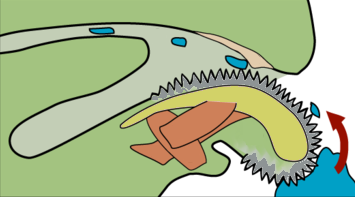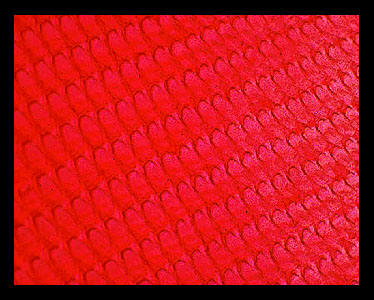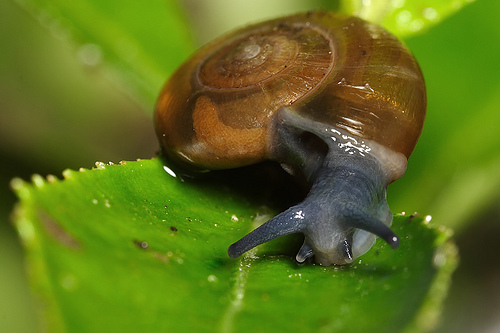Nutrition
Freshwater Pulmonates are mainly herbivorous, meaning they rely on plants for nutrition. Many opt for dead vegetation as opposed to living plant life, however. Some pond snails tend to prefer detritus and mud found on the bottom of their aquatic environment. One favorite tasty treat of these organisms is Green Algae!
One of the main features
associated with nutrient acquisition in snails
is the radula. The radula is found within
the buccal cavity, where the walls of the buccal
mass move it in a circular motion. The radula
itself is supported by muscle and cartilage.
This "toothed tongue" is m ade of chitin and is
composed of many tiny tooth-like structures.
ade of chitin and is
composed of many tiny tooth-like structures.
The actual structure of the radula depends on the
diet of the organism. Shape correlates with function. The radula
of a carnivorous gastropod is
narrow and possess a few teeth with
many long, pointed cusps. The radula of
herbivores on the other hand is broad and
has many small teeth.
Check out this microscopic view of a snail radula!!

Visit the adaptation page to learn
a
little about the circulatory system!
.jpg)
